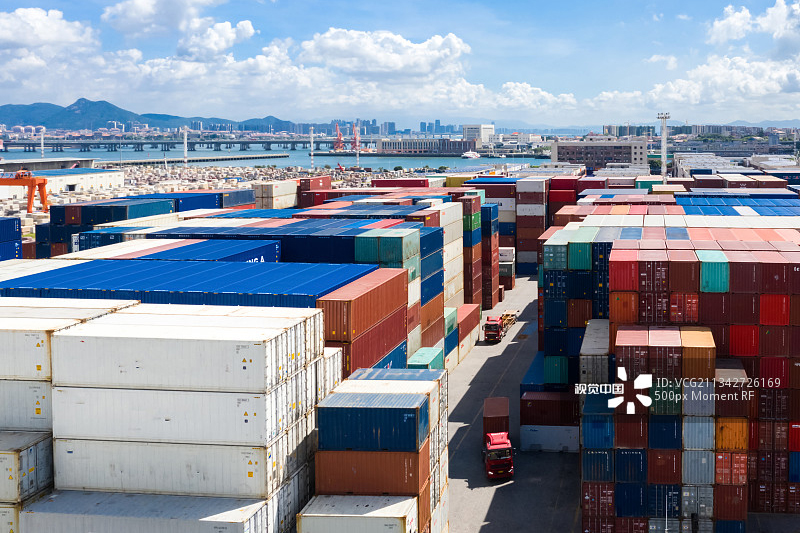1. Operation process of container LCL business booking
(1) The shipper faxes the consignment note to NVOCC, and the consignment note must indicate: shipper, consignee, notify, specific port of destination, number of pieces, gross weight, size, freight terms (prepaid, paid on delivery, third-party payment), and the name of the goods , shipping date and other requirements.
(2) NVOCC allocates the ship according to the requirements on the consignor's bill of lading, and sends a ship allocation notice to the shipper, that is, a delivery notice. The ship distribution notice will indicate the name of the ship, voyage number, bill of lading number, delivery address, contact number, contact person, latest delivery time, and port entry time, and requires the shipper to deliver the goods according to the information provided. Arrived before the delivery time.
(3) Customs declaration.
(4) NVOCC faxes the confirmation of the bill of lading to the shipper, and the shipper is requested to confirm the return before shipment, otherwise it may affect the normal issuance of the bill of lading. After sailing, NVOCC will issue the bill of lading within one working day after receiving the confirmation of the shipper's bill of lading, and settle the relevant fees.
(5) After the goods are shipped, NVOCC should provide the destination port agency information and second-trip pre-allocation information to the shipper, and the shipper can contact the destination port for customs clearance and delivery of goods according to the relevant information.
2. Problems that must be paid attention to in LCL
1) LCL cargo generally cannot specify a specific shipping company
2) The LCL bill of lading is generally a freight forwarding bill of lading (housc B/L)
3) Billing issues for LCL cargo
The billing of LCL cargo is calculated according to the weight and size of the goods. When the goods are delivered to the warehouse designated by the forwarder for storage, the warehouse will generally re-measure, and the re-measured size and weight will be used as the charging standard.

3. The difference between the ocean bill of lading and the freight forwarding bill of lading
The English of the ocean bill of lading is master (or ocean or liner) bill of loading, referred to as MB/L, which is issued by the shipping company.The English of the freight forwarding bill of lading is house (or NVOCC) bill of loading, referred to as HB/L, which is issued by the freight forwarding company picture.
4. The difference between FCL bill of lading and LCL bill of lading
Both FCL and LCL have the basic attributes of the bill of lading, such as the function of cargo receipt, the proof of the transportation contract, and the certificate of title. The difference between the two is as follows.
1) Different types of bills of lading
When shipping FCL by sea, the shipper can request MB/L (sea bill of lading) ship owner's bill, or HB/L (freight forwarding bill of lading) freight bill of lading, or both. But for LCL by sea, what the consignor can get is the freight bill.
2) The transfer method is different
The main transfer methods for sea container cargo are:
(1) FCL-FCL (full container delivery, full container connection, referred to as FCL). Shipping FCL is basically in this form. This transfer method is the most common and the most efficient.
(2) LCL-LCL (LCL delivery, unpacking connection, referred to as LCL). Shipping LCL is basically in this form. The consignor delivers the goods to the LCL company (consolidator) in the form of bulk cargo (LCL), and the LCL company is responsible for packing; the day-to-day port agent of the LCL company is responsible for unpacking and unloading, and then in the form of bulk cargo to the final consignee.
(3) FCL-LCL (full container delivery, unpacking connection, referred to as FCL). For example, a consignor has a batch of goods, which is enough for one container, but this batch of goods will be distributed to multiple different consignees after arriving at the port of destination. At this time, it can be consigned in the form of FCL-LCL. The consignor delivers the goods to the carrier in the form of full containers, and then the carrier or freight forwarding company issues multiple separate or small orders according to different consignees; the destination port agent of the carrier or freight forwarding company is responsible for unpacking, Unload the goods, divide the goods according to different consignees, and then hand them over to the final consignee in the form of bulk cargo. This method is applicable to one consignor corresponding to multiple consignees.
(4) LCL-FCL (LCL delivery, FCL delivery, referred to as LCL delivery). Multiple consignors hand over the goods to the carrier in the form of bulk cargo, and the carrier or freight forwarding company gathers the goods of the same consignee together and assembles them into full containers; The form is handed over to the final recipient. This method is used for multiple consignors corresponding to two consignees.
FCL-FCL (full-to-full) or CY-CY (site-to-site) is usually indicated on the FCL ship owner's bill or freight bill, and CY is the place where the FCL is handled, handed over, stored and kept.
LCL-LCL (consolidation to consolidation) or CFS-CFS (station-to-station) is usually indicated on the LCL freight bill. CFS deals with LCL goods, including LCL, packing, unpacking and sorting , The place of handover.
3) The importance of marks is different
The shipping mark of the full container is relatively less important and necessary, because the entire transportation and handover process is based on the container, and there is no unpacking or distribution in the middle. Of course, this is relative to the parties involved in the logistics process. As for whether the final consignee cares about the shipping mark, it has nothing to do with logistics.
The LCL mark is very important, because the goods of many different shippers share one container, and the goods are mixed together. The goods need to be distinguished by shipping marks.
Post time: Jun-07-2023








